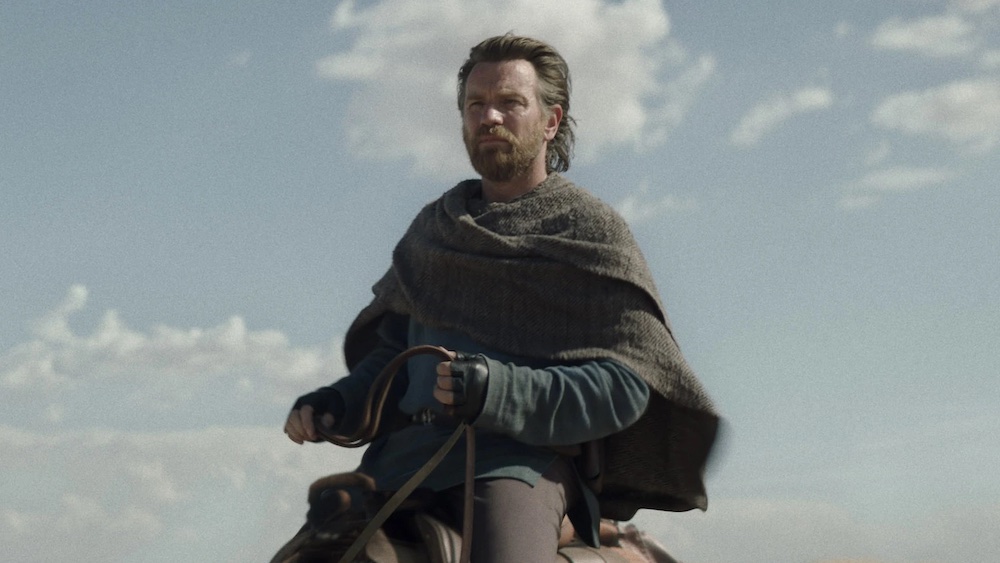
Kelley Dixon never thought she would be working on anything in the Star Wars universe as it’s not something that was ever in her wheelhouse. She got the call from Obi-Wan Kenobi director Deborah Chow because the director liked how Dixon cut drama and her character work in general. As soon as she got the job, she reached out to fellow editor Josh Earl, who immediately jumped on board. All Kelley Dixon had to do was say St— and he was in.
Both editors spoke with Below the Line about their Emmy-nominated work on the Obi-Wan Kenobi finale. Both are super honored for their nomination in cutting the episode, which Earl describes as “insane” because of watching Darth Vader and then getting an opportunity to cut Vader. The fact that the series became an actual reality after years of walking about will they or won’t they is still hard to believe at times.
BTL’s conversation with Dixon and Earl lasted just shy of 25 minutes. It could have lasted even longer simply because of the subject matter. Earl told BTL that he kept a mini-journal but he had to write it in code, lest somebody pick it up and put the contents all over the internet. It also speaks to some of the strict rules that are in store for anyone working on a Lucasfilm project.
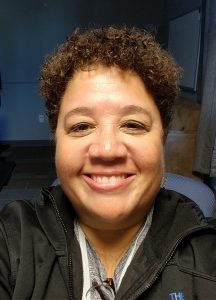
Below the Line: How honored are you to receive an Emmy nomination for your work in the action-packed finale of Obi-Wan Kenobi?
Kelley Dixon: I’m super honored. It’s always a really big honor to be recognized by your peers. I always like to tell people, look, Hollywood’s throwing a party just for you. It’s pretty cool. The fact that our show aired over a year ago—that makes it still pretty special. The thing we have going for it is we’re still Star Wars and we didn’t ruin Star Wars.
Josh Earl: Yeah, incredible.
Dixon: I like that you have our posters, too [behind you]. That’s cool.
Earl: Yeah, it’s awesome. Yeah, I agree with everything Kel said. On top of that for a Star Wars, I mean, as you can tell, I’m a bit of a dork. There’s an extra bit of love for that. For me, it’s just been insane. Insane to watch Vader and then have this happen for cutting Vader.
BTL: How did you first become attached to working on the series?
Dixon: I got a call from the director, Deborah Chow. I was pretty surprised because when my agent called and she said, Star Wars is looking for you. I was like, what? You’re kidding. Why? Why are they looking for me? When Deborah Chow talked to me, she said, Look, we really love the way that you cut drama and there’s going to be a lot of drama, there’s a lot of character work. I was really excited. I mean, I love Star Wars but I never thought I would be doing one. It’s really not in my wheelhouse that I had made for myself. I was excited to do it. When I read the scripts, I was really excited.
The scripts really had me going, as far as like, I had no idea the twists and turns. I was very excited, but also the fallibility of the main character and his self doubt, I was into all of that. I called Josh, because Josh and I have been friends for a couple of years. I don’t even know, maybe six or seven years. We always wanted to work together and so I called him up and I said, Hey, man. I’ve got this Star Wars job. How do you feel about coming on and working with me to do it? All I had to say was St—.
Earl: It was that and then I just cut her off. I was like, we’re good. Wind it up. Let’s go. Mark it down. I don’t even care. I’ll be there. She could have said anything else after that, I would have been in. But yeah, like Kel said the scripts were—I mean, I don’t know how Kel did it, but I lit a couple of candles. I played some Star Wars music and I sat back and read the script, knowing that was kind of the experience we were gonna have.
I mean, it’s always weird when you read a script. It’s weirder when you’re reading a script for something you’d watch anyway. You have to read it and enjoy it for the first time because your surprises are happening when you’re reading that script. I was so in especially with the meetup of the century that everyone didn’t know they wanted but it happened and it was really awesome
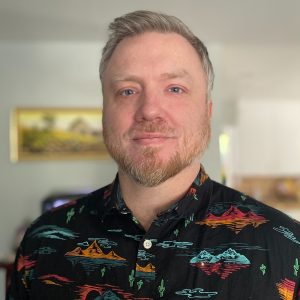
BTL: I remember thinking in one of the earlier episodes, I’m like, is that it? That’s really the battle between them?!? And then in episode six, it’s like a different Obi-Wan Kenobi shows up. The guy is back!
Earl: Yeah. He shows up prepared and as Kelly was saying, the amount of character build that we got to do in a six-episode arc to show that he got to this point where he had to make a decision and he knew he’s gonna have to face this guy—this ghost that’s been haunting him all these years—and that’s what I think made six so fun to work on—the finale. It was that build up, that combination of everything that he’d been worried about his fears, and here it is, it’s laid on the line on a barren moon.
Dixon: He still has doubt. Even in that battle, there are hills and valleys within that, that he still feels doubt, he still feels responsible, he still feels guilt, and all of those things. All of that adds up to the stakes that we’re working with in just every single lightsaber swing. Yep.
BTL: Was there a sequence or scene in the episode that you found the most challenging?
Dixon: A lot of them. I think just carrying Obi-Wan’s story, but also Reva’s story, that whole thing, from Episode 1 all the way through Episode 5, where you finally start to understand what her agenda was. I think even when I read the scripts, I was very much against Reva, but then I’m like, Oh, wow, this is what she’s doing. Oh, my goodness. I’m trying to make sure that we stayed with her story along with Obi-Wan and the Vader story. That was really challenging.
I guess we also have to talk about the cracked mask. We’re dealing with the whole Hayden Christensen’s character’s story. That whole thing was was a challenge. I don’t know. I guess this question is catching me off guard because the whole thing was super challenging just to maintain the stakes on all of it and also, to make sure that we stay true to everything that came before us. This story is going smack dab in the middle of all the canon that we already know.
The one thing that I kept telling Josh is, I said, “We know the story of Princess Leia. We know what has happened but we need to make sure that what we know does not deter from what is coming in this story. She’s gonna have this experience with Obi-Wan that we have to make sure that is plausible in what we already know.” I definitely talked to Josh about over and over and over is that if she had this experience with Obi-Wan, does it pay itself off later? Is it fair that she doesn’t remember or that they never make reference to it? I was like, we have to make sure that everything that’s happening within our story is plausible to what we already know.
Earl: To that point, too, knowing that the build up of Obi-Wan’s challenge of his fighting himself as he builds up to this moment with Vader, where he’s looking like, Can I do it? Is this my fault? All those things—we had to balance that as Kel said, at one point, where in the fight, you had to sort of feel, okay, Obi-Wan’s here for business, he’s not here to play. He’s ready to go. He’s gonna battle his old student, right? But through that fight, you want to be able to feel like, okay, Ben’s winning here. Now, it looks like Vader might have the upper hand. You’ve got to do this with a guy in a mask and you’ve got to do this with one of the most emotive actors in the world—Ewan makes it easy to show his emotions at the time. We wanted to make sure people felt like, okay, Ben has the high ground. Now, Vader literally has the high ground as he buries Ben in this pile of rocks.
Moments that you want to hold on—little tiny instances where you can see the fear in Ben’s eyes or moments where you can see that Vader is holding a giant pillar with ease and looking like, Oh, you’ve you’ve gotten stronger, but I don’t think he’s strong enough yet. Those moments, you’ve got to have the right balance to hold and choose the right shots, the right hits. At one point, Vader punches Ben and that, to me is such a telling moment of like, Hey, he’s sort of losing his cool. This is Darth Vader, he just used this fist to punch Ben right in the face when he could have just force-crushed his skull, I guess. Whatever you want to say. That was such a telling moment and I’m so glad it’s in there to see that. It’s like, Oh, there’s the Anakin that slipped through—he’s dead, but he’s still in there and he’s still angry. Managing that balance was was a challenge, but man, was it fun.
Dixon: You can see how the two of us are remembering very, very different things. It was gosh, almost two years ago that we were literally working on this—that we remember different things. We played off of each other very, very well. The entire scope of the series were touchstones for each of us that we worked well together. We were a really good balance in maintaining all of the important pieces that needed to come together for this thing.
Earl: Checks and balances. We did checks and balances with each other.
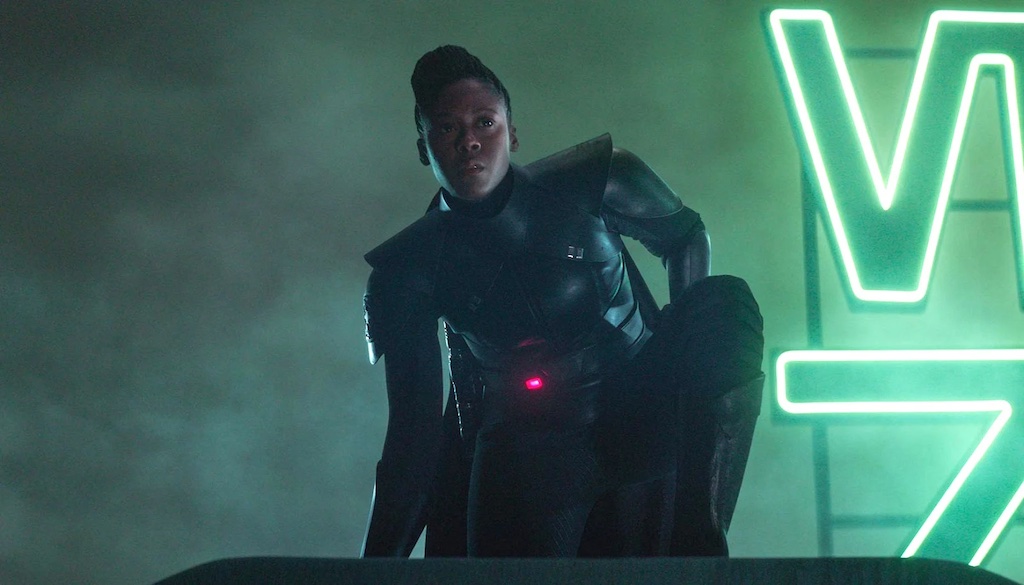
BTL: How did you all balance out the duties when it came to editing?
Dixon: I would usually take a pass on the scenes that would come in, but then if I was working on something—we’re working on three episodes at the same time. If I was taking my time on something, I’d say, “Hey, Josh, why don’t you take this part and then I’ll see what I think later.” He did and I just would be like, “Nah, that looks good. Hey, I have one idea for you right here. What do you think?”
My whole thing is when I work, especially when I collaborate with somebody, I don’t like to put my whole thing on everything because that’s not really fair and that’s not teamwork. But usually, I’ll say, “Hey, I have an idea but if you don’t like it, I’m not going to insist on it—if you don’t like it but would you just try it and see what you think?”
Earl: Which is great because again, all that evolves. When you team up with someone, I feel you get to places that you wouldn’t necessarily by yourself. Everyone can always do their own thing. But when you’re working with someone, you get to this place where someone can point out, hey, what about this? What if we did this little thing or what if we added this little shot or if you reverse this, would that be more powerful? Because we get along well and because it was such a fun project, it was easy to sit back and watch together sometimes and just kind of point out, what if we or how about we did or let’s talk to VFX about this, then Deb would come in and then we’d have another voice that would allow it to be—because it’s all ultimately, Deb’s vision. That’s the thing you’re trying to get to but to get there, having two heads is nice. I thought it was really fun to collaborate on that.
BTL: How did the lightsaber battle evolve from the time you started editing until the time that we got to see the final cut on Disney+?
Dixon: When they were shooting that, I think it was probably a good two weeks that they shot that. I think it was probably two weeks long of shooting at least. We would go down to the set and we’d watch a little bit, watch them, and watch the choreography of it. They basically had to shoot it in sections. I want to say that they shot it in order of what actually happened. I think that they did but I can’t remember. But for the most part, it came together in order and then we would go up and I would say, I’m still busy working on something from Episode 4.
Josh worked on the Vader and Obi-Wan coming in—the standoff—and then I took some of the middle part. What we did was we just passed it back and forth. I would take a small section, he would take a small section. The way they would choreograph it, they would do specific stunt moves and then they would send us the dailies. We worked a lot on the rock pit part of it, where Obi-Wan goes in the pit and is fending off the rocks and what that ended up being with the flashbacks of the children and stuff—those were some of the last things that we did. Of course, the cracked mask with Anakin was its own scene, and that we worked extensively on with Deborah Chow. We worked all of it with Deborah Chow, but extensively with her on that probably for a good—I would say at least a week that we spent just on that one scene.
Earl: Yeah. That was before we tweaked sound design and did more. You could even say that one extended into—there’s a lot of balance to that one, I think, where you had to get that nuance, really hit the fact that it’s the moment of failure. It’s the, I’m not gonna give up so you’ve got to make your choice. It’s such a heavy moment. But the other thing I’ll say is that the stunt vis—which is the visualization film by the stunt crew that they they shoot over—you can see the intent for some of the stunts, which was nice to have, to line up and go, Okay, so this is what they meant by this.
Some of those things evolve—there’s a moment in there, where they’re back to back—Kelly, remember that moment of the back to back? It was Vader with Ben. Stunt vis looked one way, but once they shot at with the actual actors, it looked even cooler, and then there was a moment to actually try and make it so it was more dynamic with the handheld camera. It evolved, pacing wise, sometimes.
Even we would open things up—even the face off when they get nose to nose. There’s a little bit more of a breath because that is the old western standoff, that’s the moment they’re at either side of the corral (Makes noises.). They even have the side by side there on the barren moon. There was an evolution to it, for sure. But what was cool was I always felt like we were moving it forward and it was creatively getting better and better.
Dixon: There was never a problem. A lot of times when you end up with things like that, as editors, you end up solving problems that didn’t quite work. I think that Deborah Chow, to me, is probably one of the best directors that I’ve worked with. She really, really, really had that whole thing set very, very well. We never ended up with issues where we couldn’t make a move work or anything like that.
Everything worked, which was really quite nice because when things work, then you can enhance. You’re not spending all your time solving problems. The biggest problem with that scene was that there were things we had to cut out. There are moves that we’re like, Well, let’s have them grapple and get done with it quicker. This is cool, but it’s a little much, let’s cut this out.
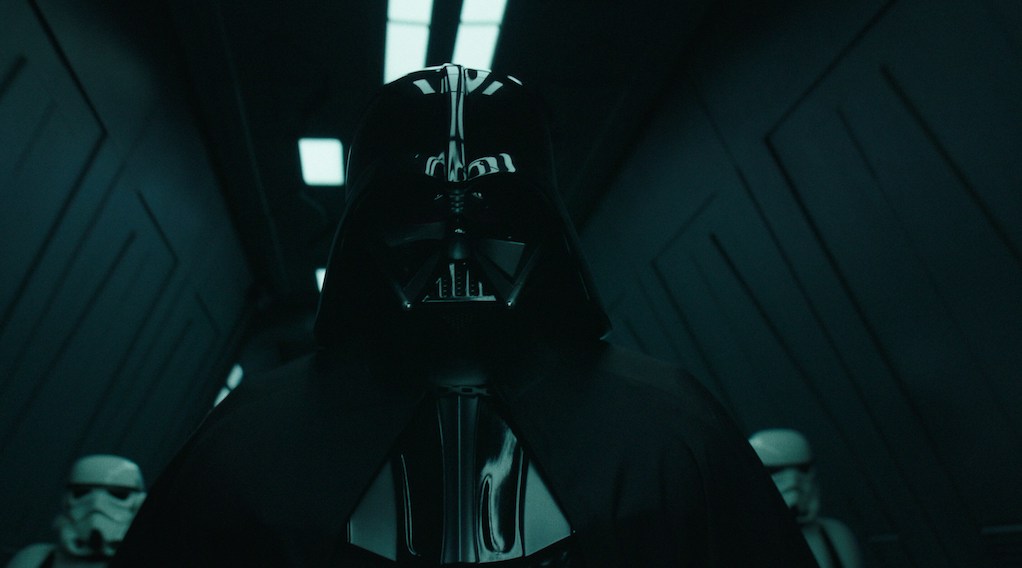
BTL: At any point while working on Obi-Wan Kenobi, did you ever have a pinch-me moment that you can’t believe you’re actually working in the Star Wars universe?
Dixon: Every single day.
Earl: Okay, want a list? Okay, ready, let’s go, list it.
- Working on the Leia getting ready in her bedroom in Episode 6 scene.
- John Williams is going to do the suite for the show.
- Voicing a stormtrooper in Episode 4.
- Stepping onto an imperial destroyer.
Those were—I’m not even gonna lie—it was stuff that I had to pinch myself a lot, but still, what’s great about storytelling, in my opinion, is—I’ve said it a thousand times—I’m very lucky to be able to just tell stories daily, regardless of what kind of stories they are. This, in particular, there was that balance of like, okay, I’m walking on the set because I need to look at something or we need to talk through something with Deb and then there’s times where I’m walking onto an empty set. They’re sort of getting ready for something and I just want to go on to the bow of the destroyer and take a picture because oh my G-d, I’m on that thing but that’ll get you shot.
Dixon: You can’t!
Earl: Yeah, exactly. The droids—the Lucasfilm droids would have shot me down, but there was part of me that’s like, I’ll take those droids on to take this photo.
Dixon: Yeah, there are no cameras at all. I have friends now, people asking me, Can you show us your cutting room? Can you show us pictures? I’m like, I don’t have any pictures. They don’t allow cameras in there. That’s definitely a rule that I do not break at all. I think my pinch-me Star Wars moment was mostly—I was taking it all in and really, really enjoying it. But also, I felt very, very responsible because, again, I was very surprised to get this call and very excited. I really, really wanted to make sure that I was being true to the work that I usually do but I also was being true to the Star Wars world.
I feel good about the fact that I cut this and I did a lot of the things that are my instinct, and they still carried through. Even in other episodes, I’m super proud of—especially in episode two—of the way that Obi-Wan finally gives up, that he can use the force but he’s scared to use the Force. It’s when Leah jumps off the building and he’s afraid and he’s afraid that he doesn’t have it and he must save her, but he doesn’t know if he can save her and all of that, that was just—I absolutely loved that moment because it was just so much of his own personal psychology going through there. I just felt like, wow, it’s Star Wars, but it’s still character and it’s still so important. It’s what gives the whole thing stakes.
Earl: Do you remember that moment? I think both of us, the first time on the volume, it was the hangar, right? It was the hangar—they just polished the floor. Do you remember that first time of like, we walked in and I think we both had that—regardless of the fact that it was Star Wars or anything, it’s the massive screen that they shoot on, that super high tech, evolved screen that we stepped onto where it was just like, whoa, hold on a second, we just kind of got transported.
Dixon: Yeah.
Earl: It’s just overwhelming. By the way, this is the notebook I kept. It has all of the production stickers from different departments. But inside of it, I kept these coded notes because everyone had to be—I didn’t want anyone to ever come across this and get like, “Hey, by the way, we just saw Leia today, she was dropping from a ceiling.” Everything has the code names. I was looking through it and it was like, we touched the flashlight today. We held the flashlight, which was the code for lightsaber. CC was our was our Leia. I kept all those because I was like, I’m gonna want to remember this—right now, I can’t. If I write the words in here, my luck someone’s gonna grab this book and it’s going to be published in Star Wars dot dot spoiler for the next month. I kept notes about how incredible it was, for sure. Mini-journal.
Dixon: I wrote nothing down.
All episodes of Obi-Wan Kenobi are currently streaming on Disney+.





